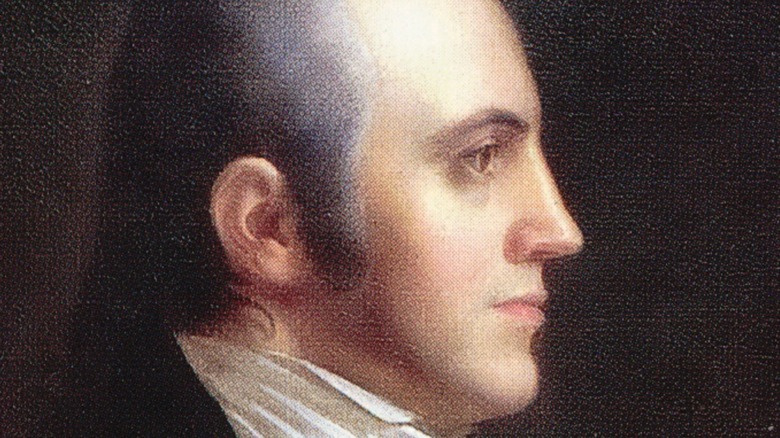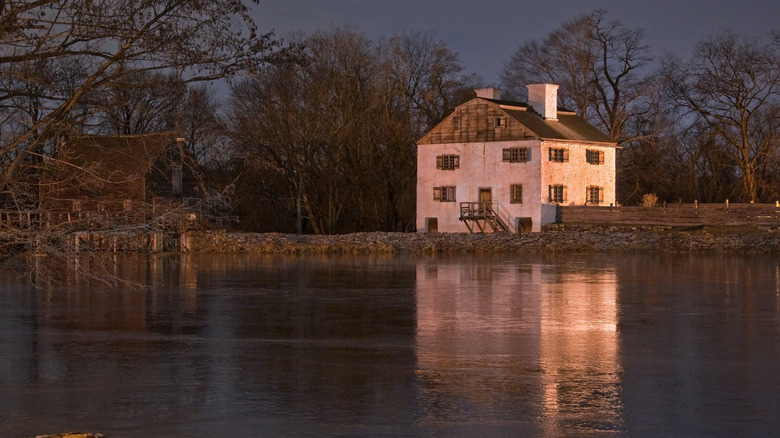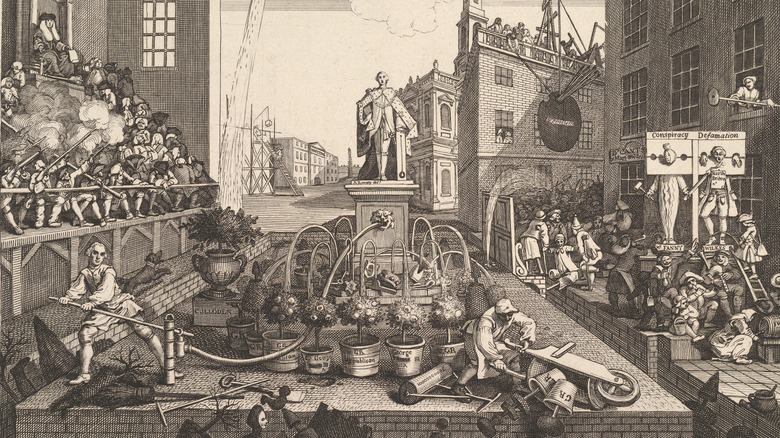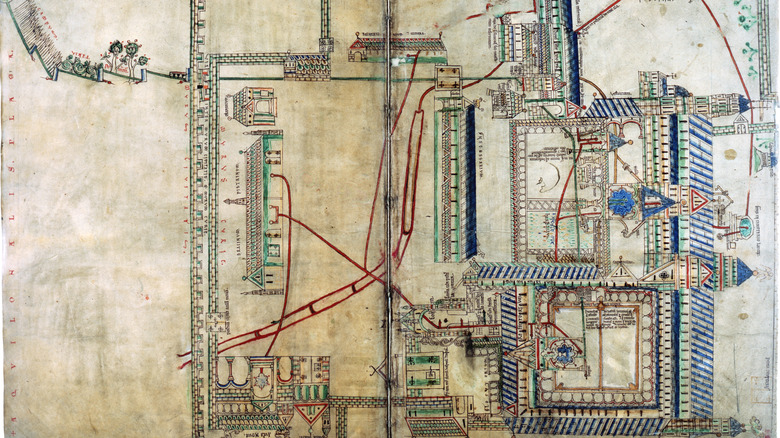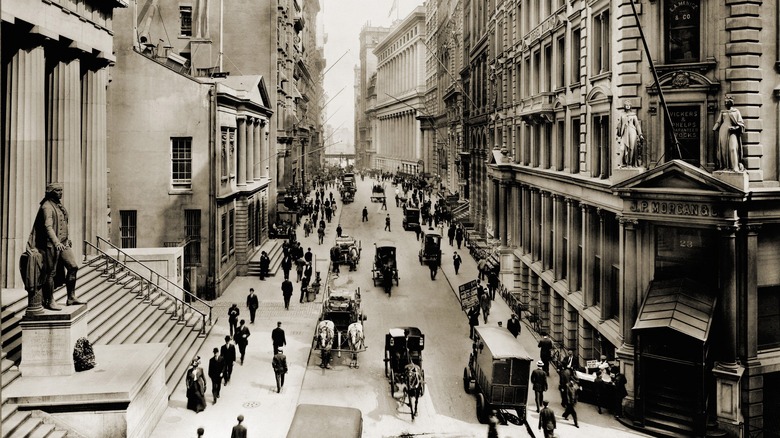Inside The Water Company Scam Created By Aaron Burr And Alexander Hamilton
History has not looked kindly upon the former vice-president, convicted traitor, and failed emperor of Texas, the illustrious Aaron Burr (above). While other early U.S. leaders in the late 18th century consolidated their influence and curried circumstances to their benefit, Aaron Burr executed blatant fraud schemes on a regular basis. Burr is legendary for killing Alexander Hamilton in a duel in 1804, and infamous for his purported scheme to establish his own country in the current state of Texas, for which he was tried and convicted of treason.
The astounding audacity of Burr garnished the revulsion of his contemporaries and of those who write the history of Burr's time. Historians, unlike Burr's contemporaries, frequently cite the killing of Hamilton as Burr's most grave original sin. In reality, shooting Hamilton wasn't even close to the worst thing Burr had done.
Among his veritable portfolio of crimes and attempts at fraud was a scheme involving the Manhattan Water Company, a cooperative operation both Burr and his adversary, Hamilton, advocated as partners. Alas, the plan involved an attempt to siphon city funds appropriated for the building of a new city water system into a bank. Burr was not one for subtlety. Also, Burr and Hamilton's duel kind of started with a falling-out over, of all things, plumbing.
Manhattan desperately needed a water system
The 18th century was dirty. The 18th-century water in New Amsterdam (Manhattan, New York) was utterly foul. The river served as a repository for the Colonial-era city's refuse, detritus, and discarded fluids. Fungal organisms blooming from rotten animal matter and vegetable waste were dumped into the water supply on a regular basis, and not on accident, either. The river itself was a congealed potion of putrid ingredients, a thin film of goo across its surface, chunks of better-left-unnamed categories of stuff buoyed in its still-water basin, immaculate sacraments to infectious disease.
When a season of yellow fever killed no fewer than 2,000 people in Manhattan in 1798 (via History Is Now), the doctors did not mince words. For all Colonial doctors' questionable methods and cancerous potions, their assessment of the widespread outbreak in its aftermath was anachronistically apt: The doctors blamed the city with the disgusting cocktail of runoff and rot that it called "city water."
The New York state assembly proposed the building of a water system
A movement to secure the resources for newly-engineered water delivery and distribution was underway, if gradually so. In 1799, a bill was proposed — and not one minute too late — that would empower the New York State Assembly to establish a project that would funnel water from the Bronx River back for city usage (via History Is Now). While indoor plumbing would not be a thing for another century-and-a-half, the United Kingdom had operated city plumbing infrastructure since the latter half of the 17th century, over 100 years prior. The United States may be young, but with city-style settlements and lifestyles, the nation needed plumbing. Even in the furious smog of grandstanding that characterized much of the debate in the New York State Senate during the peak era of the Federalist-Jeffersonian face-off and its subsequent unending drama over the banks, someone, somehow was sensible enough to successfully slip in this pretty straightforward, objectively wise proposal to provide clean water to people in New York.
And so they did. It unfolded marvelously. All went well. An unparalleled victory thanks to statecraft and bureaucracy moving as one. Everyone got clean water, and nobody made the whole thing weird. The end. (...Right?)
Aaron Burr was ready to build the water system
Wrong. The New York State Assembly's attempt to build a water system was an absolute disaster.
The first thing that went wrong with the bill was Aaron Burr's immediate announcement that he would support this bill (via History Is Now). Burr's argument in favor of a project headed by Burr himself and his own private company was expressed with grandiosity reserved pretty much exclusively for remarks on two topics: God and money. Aaron Burr was trying to set up some kind of shell scam involving the city's new water company. Burr did not simply try to scam the government subversively and noncommittally, but brazenly, as the basis for every operating scheme the promised water company would carry out. Burr and Hamilton shared a metaphorical handshake from across the aisle, with Burr deputizing himself to whip the Democratic-Republicans. Former U.S. Treasury Secretary Alexander Hamilton deployed his intelligence and savvy to win support from the unlikely Federalists. The two succeeded.
On April 2, 1799, the bill passed in the State Assembly and the Manhattan Water Company was officially a valid operation. But right before the final vote approving the bill, Burr had padded it with a questionable (or perhaps rather definitive and explicit) clause granting the Manhattan Water Company the right to spend any of its capitol on any operation or purchases it chose. "Obviously some pipes were laid," Kelsey Browe, assistant curator at the Morris-Jumel Manhattan Mansion told The New York Times in a discussion on the Manhattan Water Company. "But Burr dropped all pretense that this was anything but pretense pretty quick ..."
Aaron Burr built a bank, not a water system
According to History Is Now, a pipe-like structure comprised of shoddily-assembled hollow logs was laid out, but this system was inadequate at best. The Manhattan Water Company remained the only supplier of New York drinking water until 1842.
The real grift? On September 1, 1799, the Manhattan Water Company opened a "house of certificate and deposit at 40 Wall Street" (via Public Water), dubbed the Manhattan Company Bank. (Hamilton controlled the only other two banks in operation at the time, and he was incensed at Burr for this threat to his monopoly, per Why Is This Interesting.) Barely peaceable acquaintances as they were at this point, Burr and Hamilton's mutual adversity only crescendoed from this point until it ended in the infamous duel and Hamilton's death.
So yes, the very first utility company in the United States was not a utility company at all. It was actually a bank, now known as JP Morgan Chase & Company Bank. When it came to his numerous attempts to defraud the United States and other entities, Burr never did quite master the art of subtlety.
